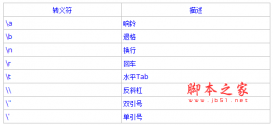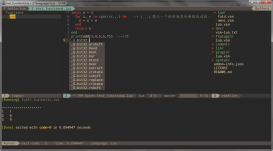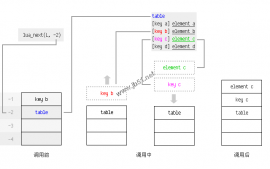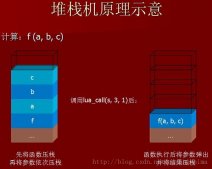關(guān)系表類(lèi)型,這是一個(gè)很強(qiáng)大的類(lèi)型。我們可以把這個(gè)類(lèi)型看作是一個(gè)數(shù)組。只是 C語(yǔ)言的數(shù)組,只能用正整數(shù)來(lái)作索引; 在Lua中,你可以用任意類(lèi)型的值來(lái)作數(shù)組的索引,但這個(gè)值不能是 nil。同樣,在C語(yǔ)言中,數(shù)組的內(nèi)容只允許一種類(lèi)型;在 Lua中,你也可以用任意類(lèi)型的值來(lái)作數(shù)組的內(nèi)容,nil也可以。
基本介紹
注意三點(diǎn):
第一,所有元素之間,總是用逗號(hào) "," 隔開(kāi);
第二,所有索引值都需要用 "["和"]" 括起來(lái);如果是字符串,還可以去掉引號(hào)和中括號(hào); 即如果沒(méi)有[]括起,則認(rèn)為是字符串索引
第三,如果不寫(xiě)索引,則索引就會(huì)被認(rèn)為是數(shù)字,并按順序自動(dòng)從 1往后編;
例如:
tt = {"hello" ,33}
value = 4
tab = {[tt] = "table",key = value, ["flag" ] = nil, 11}
print(tab[tt])
print(tab.key)
print(tab[1 ])
以上寫(xiě)法都是對(duì)的。
look = {[www] = "ok"}這樣是不對(duì)的,www沒(méi)有賦值,所以默認(rèn)為nil因此出錯(cuò)table index is nil
---
temp = 1
tab = {[temp] = 1, 11}
print(tab[temp]) --此時(shí)的結(jié)果是11,因?yàn)?1沒(méi)有顯式對(duì)應(yīng)的key,因此從1開(kāi)始,如果前面定義了,則覆蓋其value
---
temp = 2
tab = {[temp] = 1, 11}
temp = 1
print(tab[temp]) -- 結(jié)果是11,雖然定義時(shí)[temp] = 1,但是后來(lái)我們改變了temp的值,所以指向另外的key了
以上可知:
1.對(duì)于字符串,在{}定義時(shí),可以key = value, 也可以["flag"] = nil,索引都是string類(lèi)型,對(duì)于非nil類(lèi)型變量(包括字符串),都可以[variable]=value的方式
2.使用table時(shí),對(duì)于字符串,可以通過(guò).的方式訪問(wèn),也可以通過(guò)[]方式訪問(wèn)。tab[a],tab[b],只要a==b那么tab[a]可以訪問(wèn)到tab[b]的值
3.不管定義索引時(shí)用的是常量還是變量,最終table中value的索引key是常量,不會(huì)隨變量的改變而變化該value的key
嵌套
tb11= {tb12 = {bool = true}} -- simple, it's a table IN a table :)
-- Call magic!
print(tb11.tb12.bool ) -- works fine, since it's calling the key and value correctly.
print(tab11["tb12" ].bool ) --same as line 33
print(tab11.tb12 ["bool"]) --same as line 33
print(tab11["tb12" ]["bool"]) --same as line 33
修改table的value
--Altering a table's content. Basically manipulating the values of the keys.
lucky= {john="chips" ,jane ="lemonade",jolene="egg salad" }
lucky.jolene = "fruit salad" --changed the value to "fruit salad" instead of "egg salad"
lucky.jerry = "fagaso food" -- adding a new key-value pair to the container lucky.
lucky.john = nil -- remove john from giving anything or from being a key.
table的易變性
a = {}; b = a;
print(a == b) --> true
c,d = {},{};
print(c == d) -->false
table庫(kù)函數(shù)使用
-----------------------------------------------------------
1. table.sort (table [, comp])
Sorts table elements in a given order, in-place, from table[1] to table[n], where n is the length of the table. If comp is given, then it must be a function that receives two table elements, and returns true when the first is less than the second (so that not comp(a[i+1],a[i]) will be true after the sort). If comp is not given, then the standard Lua operator < is used instead.
The sort algorithm is not stable; that is, elements considered equal by the given order may have their relative positions changed by the sort.
name = {"you" ,"me", "him","bill" }
--table.sort - only works with arrays!
table.sort(name)
for k, v in ipairs( name) do
print( k,v)
end
--table.sort uses callbacks. a function that is writtent to be called by a library function.
function cmp( a, b)
if string.sub(a,2 ,2) < string.sub(b,2 ,2) then
return true
else
return false
end
end
table.sort(name, cmp)
for k, v in ipairs( name) do
print( k,v)
end
2. table.insert (table, [pos,] value)
Inserts element value at position pos in table, shifting up other elements to open space, if necessary. The default value for pos is n+1, where n is the length of the table so that a call table.insert(t,x) inserts x at the end of table t.
--table.insert --an easy to copy a table to another table or adding elements to an array.!
foo = {"a" ,"c", "d"}
bar = {}
function printt( table)
for i=1 ,#table do
print(i,table [i ])
end
end
print("before insert:" )
printt(foo)
table.insert(foo,2 ,"b")
print("after insert" )
printt(foo)
3. table.concat (table [, sep [, i [, j]]])
Given an array where all elements are strings or numbers, returns table[i]..sep..table[i+1] ··· sep..table[j]. The default value for sep is the empty string, the default for i is 1, and the default for j is the length of the table. If i is greater than j, returns the empty string.
--table.concat does what it implies. Takes an array and concates to one string.
num = {1 ,2, 3,4,5 ,6}
print(table.concat (num ,"<"))
4. table.remove (table [, pos])
Removes from table the element at position pos, shifting down other elements to close the space, if necessary. Returns the value of the removed element. The default value for pos is n, where n is the length of the table, so that a call table.remove(t) removes the last element of table t.
abc = {"a" ,"b", "c"}
print(table.remove (abc ,2))
print("abc length = " .. #abc)
5. table.maxn (table)
Returns the largest positive numerical index of the given table, or zero if the table has no positive numerical indices. (To do its job this function does a linear traversal of the whole table.)
--table.maxn
apple = {"a" ,"p",[ 5]="e"}
print(table.maxn (apple )) -- 5
duck = {[-2 ]=3,[- 1]=0}
print(table.maxn (duck )) -- 0
面向?qū)ο缶幊?/strong>
--note for a object to work, it needs a closure(inner function with an upvalue(a local value from a higher scope))
--note: the more closures made, the slower the program would run.
function mg1( n)
local function get ()
return n ;
end
local function inc (m )
n = n +m ;
end
return {get = get, inc= inc}
end
object = mg1(50 )
print(object.get ())
print(object["get" ]())
object.inc(2 )
print(object.get ())
----------------------------------------
do
local function get (o )
return o.one
end
local function inc (self , two )
self.one = self.one + two
end
function mg3 (one )
return {one = one , get = get , inc = inc }
end
end
a = mg3(50 )
a:get()
a.inc(a,2 )
print(a:get())
----------------------------------------
do
local T = {};
function T:get()
return self.n ;
end
function T:inc(m)
self.n = self.n + m ;
end
function mg4 ( n )
return {n = n , get =T.get , inc =T.inc }
end
end
c = mg4(30 )
print(c:get())
c:inc(4 )
print(c:get())
(完)






